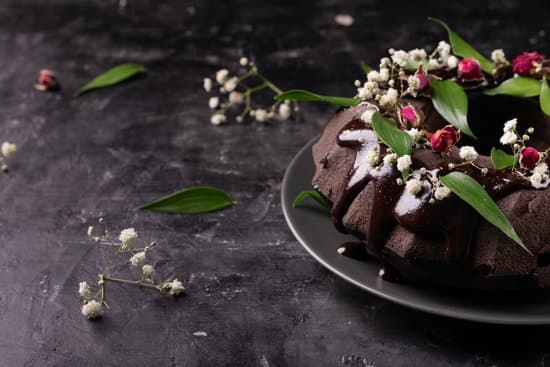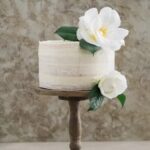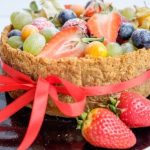Are you wondering what is the best frosting for cake decorating? The right frosting can make or break the appearance and taste of your baked creations. Whether you are looking for a classic buttercream, a tangy cream cheese, a light and fluffy whipped cream, or a decadent ganache, choosing the perfect frosting is crucial for achieving your desired cake design.
The type of frosting you choose can greatly impact the overall look and flavor of your cake. Buttercream is a classic and versatile option that allows for smooth finishes and intricate designs. Cream cheese frosting offers a tangy and rich flavor that pairs well with certain cake flavors. Whipped cream frosting adds a delicate touch with its light and airy texture, while ganache provides a glossy finish perfect for elegant cake designs.
If you prefer to work with fondant or royal icing, these options offer different decorating techniques and finishes. Fondant allows for intricate decorations due to its smooth and pliable nature, while royal icing hardens quickly, making it ideal for intricate piping and delicate designs. For those with dietary restrictions or preferences, there are also vegan frosting options available to ensure everyone can enjoy beautifully decorated cakes.
Buttercream Frosting
One of the key factors that make buttercream frosting a favorite among bakers is its ability to hold its shape well in warm temperatures. This makes it ideal for outdoor events or occasions where the cake might be displayed for an extended period. Additionally, buttercream frosting is relatively easy to work with, making it a great option for both beginner and experienced decorators alike.
When considering what is the best frosting for cake decorating, many professionals swear by buttercream for its taste, versatility, and ease of use. Whether you prefer a traditional American buttercream made with powdered sugar and butter, or a meringue-based Swiss or Italian buttercream for a smoother finish, there are plenty of variations to choose from based on your personal preference and the desired outcome of your cake design.
| Advantages of Buttercream Frosting | Best Uses |
|---|---|
| Easy to work with | Simple birthday cakes |
| Versatile in terms of coloring and flavoring | Elaborate wedding cakes |
| Holds shape well in warm temperatures | Outdoor events |
Overall, when deciding on the best frosting for cake decorating, consider the characteristics that buttercream offers – taste, versatility, ease of use, and stability. These factors make it a top contender for creating stunning and delicious cakes that will surely impress your guests. Remember to practice different piping techniques and experiment with flavors to elevate your cake decorating skills using buttercream frosting.
Cream Cheese Frosting
One of the advantages of cream cheese frosting is its versatility in both flavor and texture. It can be easily adjusted by adding different ingredients such as lemon zest for a citrusy kick or vanilla extract for a more traditional flavor profile.
Additionally, the smooth and creamy consistency of cream cheese frosting makes it ideal for both filling layers in cakes and piping intricate designs on the surface. Here are some key benefits of using cream cheese frosting for cake decorating:
- Rich and flavorful taste that complements certain cake flavors
- Smooth and creamy texture that is easy to work with for decorating purposes
- Versatile enough to be customized with different ingredients for unique variations
When considering what is the best frosting for cake decorating, cream cheese frosting is undoubtedly a top contender due to its delicious taste, smooth texture, and adaptability to various cake flavors. Whether you are a beginner or an experienced baker, incorporating cream cheese frosting into your repertoire can elevate your cakes to new heights in terms of both flavor and presentation.
Whipped Cream Frosting
When it comes to cake decorating, choosing the right frosting can make all the difference in achieving the desired look and taste for your creation. One popular frosting option that is perfect for adding a delicate touch to cakes is whipped cream frosting. Known for its light and fluffy texture, whipped cream frosting is a favorite among bakers who want to create elegant and airy designs on their cakes.
Whipped cream frosting is made by whipping heavy cream with sugar until it forms stiff peaks, creating a smooth and velvety texture that is easy to spread or pipe onto cakes. This type of frosting pairs well with a variety of cake flavors, from classic vanilla to decadent chocolate, adding a subtle sweetness without overwhelming the overall taste of the cake.
Additionally, whipped cream frosting can be easily flavored with extracts such as vanilla, almond, or citrus zest to complement different cake flavors.
One of the benefits of using whipped cream frosting for cake decorating is its versatility. It can be used to create simple swirls and rosettes for a minimalist look, or it can be layered between cake tiers for a light and refreshing finish.
Whipped cream frosting is also a great option for those who prefer lighter frostings that are not overly sweet or rich. Whether you’re decorating a birthday cake, wedding cake, or any other special occasion dessert, whipped cream frosting offers a delicate touch that will impress both visually and in terms of taste.
Ganache Frosting
One of the key benefits of ganache frosting is its ability to hold its shape well, making it ideal for creating intricate designs and decorations on cakes. Whether you want to create smooth finishes or add decorative patterns, ganache can be easily manipulated to achieve the desired look. Additionally, ganache sets quickly, allowing decorators to work efficiently without worrying about the frosting melting or losing its shape.
In terms of taste, ganache frosting offers a rich and indulgent chocolate flavor that complements a wide range of cake flavors. From classic vanilla cakes to rich chocolate creations, ganache enhances the overall taste experience. Its decadent texture adds depth to the cake layers and provides a satisfying mouthfeel for those enjoying the dessert. When considering what is the best frosting for cake decorating, ganache is definitely a top choice for those seeking elegance and sophistication in their creations.
| Key Points | Details |
|---|---|
| Texture | Smooth and glossy finish |
| Versatility | Ideal for intricate designs and decorations |
| Flavor | Rich chocolate taste that elevates cake flavors |
Fondant Frosting
When working with fondant, it is essential to knead it properly to achieve a smooth consistency and eliminate any air bubbles. Here are some tips for using fondant effectively in cake decorating:
- Roll out the fondant on a clean, flat surface dusted with powdered sugar to prevent sticking.
- Use cornstarch or shortening on your hands and tools to prevent the fondant from sticking while shaping decorations.
- For more vibrant colors, use gel food coloring instead of liquid coloring to avoid altering the fondant’s texture.
Whether you are a beginner or experienced cake decorator, fondant frosting offers endless possibilities for creativity and beautiful designs. From elegant wedding cakes to whimsical birthday creations, fondant allows you to bring your artistic vision to life with precision and detail. Experimenting with different techniques and tools can help you master the art of using fondant in cake decorating for stunning results that will impress your friends and family.
Royal Icing
How to Use Royal Icing
One of the key characteristics of royal icing is its ability to harden when exposed to air, making it crucial to work quickly when decorating with this type of frosting. To use royal icing for piping and detailing on cakes, it is best to transfer the frosting into a piping bag fitted with a small round tip.
This allows for more control over the flow of the icing and helps create precise lines and intricate designs. For flooding techniques where larger areas need to be covered with royal icing, a slightly thinner consistency can be achieved by adding small amounts of water until the desired texture is reached.
Decorating Tips for Royal Icing
When working with royal icing for cake decorating, it’s important to keep in mind that this type of frosting dries quickly once exposed to air. To prevent the icing from drying out while decorating, cover any unused portions with plastic wrap or a damp cloth.
Additionally, using gel food coloring instead of liquid can help maintain the consistency of the royal icing while adding vibrant colors to your creations. Experimenting with different piping tips and techniques can also elevate your cake designs when using royal icing, allowing for endless possibilities in creating stunning decorations.
Overall, royal icing provides cake decorators with a versatile option that allows for intricate details and elegant designs on cakes. Whether you’re looking to write personalized messages, create delicate lace patterns, or add floral decorations, royal icing offers the flexibility and precision needed for beautiful cake decorating. By mastering the art of working with this type of frosting and experimenting with various techniques, you can enhance your cake creations and impress both clients and guests with professional-looking designs.
Vegan Frosting Options
For individuals following a vegan lifestyle or those with dietary restrictions, finding the perfect frosting for cake decorating can sometimes be challenging. Fortunately, there are several vegan frosting options available that not only meet these requirements but also taste delicious and provide great results in terms of decoration.
Coconut Milk Frosting
One popular vegan frosting option is coconut milk frosting. This creamy and versatile option can be easily whipped up with coconut milk, powdered sugar, and vanilla extract. The natural sweetness of the coconut milk complements a variety of cake flavors, making it a great choice for anyone looking for a dairy-free frosting option.
Aquafaba Frosting
Another innovative vegan frosting alternative is aquafaba frosting. Aquafaba is the liquid found in canned chickpeas or the water leftover from cooking chickpeas. When whipped, aquafaba creates a light and fluffy texture similar to meringue, making it perfect for frosting cakes. By incorporating powdered sugar and flavorings like vanilla or cocoa powder, you can create a delicious vegan frosting that rivals traditional buttercream.
Avocado Frosting
Avocado may seem like an unlikely ingredient for frosting, but it actually makes a fantastic base for a creamy and rich vegan option. By blending ripe avocados with cocoa powder, maple syrup, and a touch of vanilla extract, you can create a luscious chocolate avocado frosting that pairs perfectly with chocolate cakes. This unique vegan frosting provides a healthier alternative while still delivering on taste and texture.
Overall, when choosing the best frosting for cake decorating as a vegan or someone with dietary restrictions, experimenting with different ingredients like coconut milk, aquafaba, or avocado can lead to surprising results. These vegan options not only cater to specific dietary needs but also offer creative ways to decorate cakes without compromising on flavor or presentation.
Conclusion
Choosing the best frosting for cake decorating can truly make a difference in the overall look and taste of your baked creations. Each type of frosting brings its own unique qualities to the table, from the classic and versatile buttercream to the elegant and glossy finish of ganache. Understanding the characteristics of each frosting option can help you make an informed decision based on the specific needs of your cake design.
When deciding on the best frosting for your cake decorating project, consider factors such as flavor, texture, and design requirements. For a light and fluffy finish, whipped cream frosting may be ideal, while ganache offers a decadent touch perfect for upscale designs.
Cream cheese frosting adds a tangy richness that complements certain cake flavors, while fondant provides a smooth canvas for intricate decorations. Royal icing, on the other hand, is perfect for delicate piping work and intricate designs that require a hardened finish.
In conclusion, there is no one-size-fits-all answer to the question of what is the best frosting for cake decorating. The key is to experiment with different options and techniques to find the perfect match for your specific needs.
Whether you are looking for a creamy and rich finish or a delicate and airy texture, understanding the characteristics of each type of frosting will guide you towards creating stunning cakes that not only look beautiful but also taste delicious.
Frequently Asked Questions
What Icing Is Best for Decorating Cakes?
The best icing for decorating cakes is usually royal icing or buttercream. Royal icing provides a smooth, hard finish that is perfect for intricate designs, while buttercream is more versatile and easier to work with for beginners.
What Frosting Do Professionals Use?
Professionals often use Swiss meringue buttercream or Italian meringue buttercream for their cakes. These frostings are known for their smooth texture and ability to hold intricate designs well. They also have a luxurious taste that elevates the overall cake experience.
What Is the Best Icing to Practice Cake Decorating?
When practicing cake decorating, it’s best to start with a simple buttercream icing. Buttercream is easy to work with, forgiving of mistakes, and can be easily adjusted in consistency by adding more liquid or powdered sugar. It allows beginners to focus on mastering basic techniques before moving on to more advanced icings like fondant or ganache.

Welcome to our cake decorating blog! My name is Destiny Flores, and I am the proud owner of a cake decorating business named Cake Karma. Our mission is to provide delicious, beautiful cakes for all occasions. We specialize in creating custom cakes that are tailored specifically to each customer’s individual needs and tastes.





